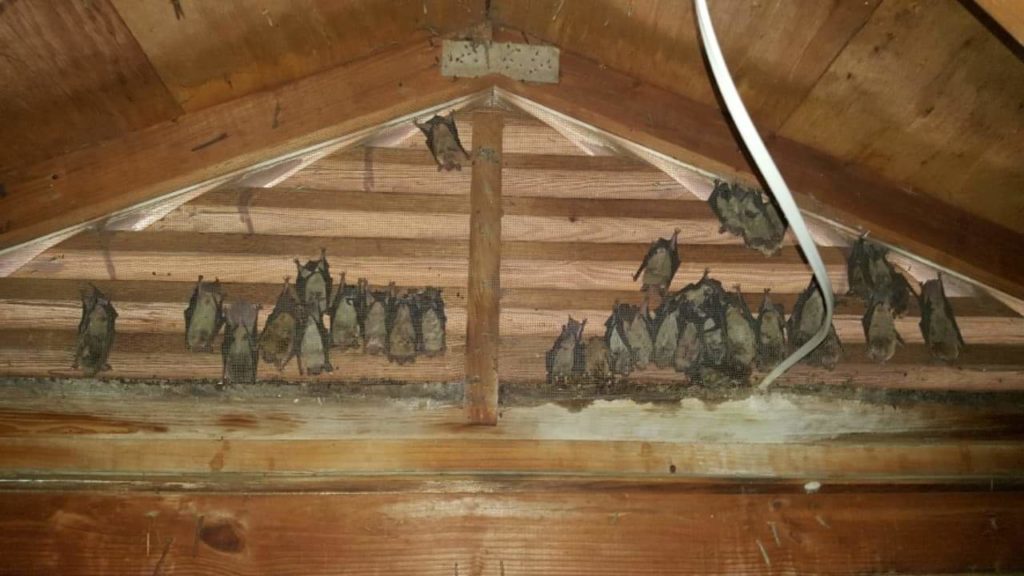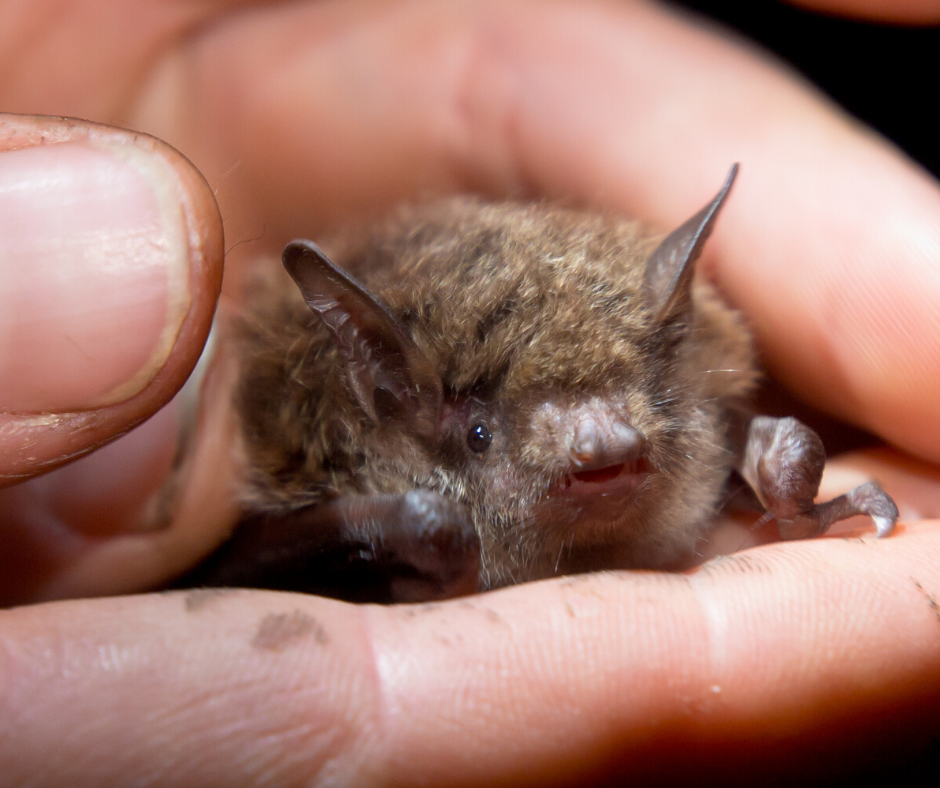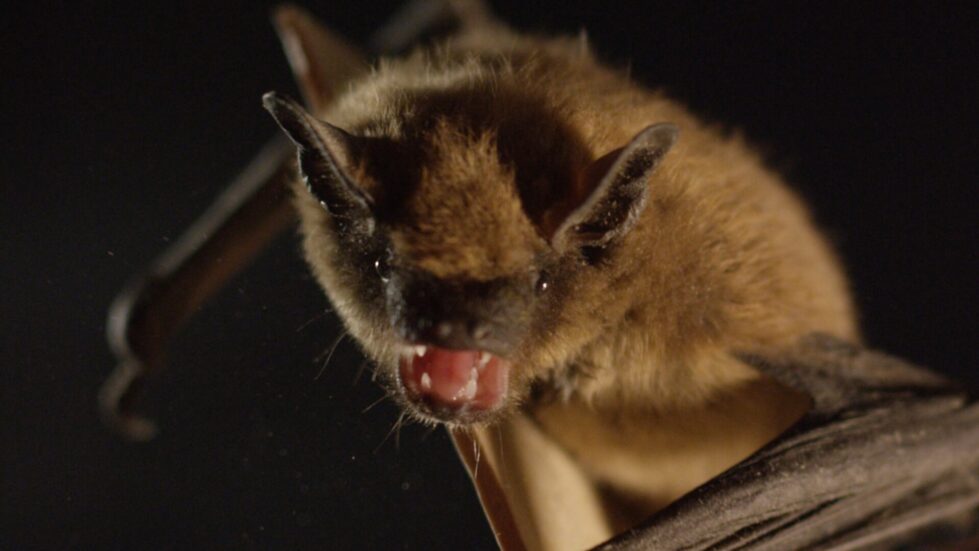Bats rarely leave a home after they’ve settled in. Here’s all you need to know about the most popular breeds of house bats, as well as how to evict bats in your attic using the exclusion method.
There’s a stench in your home. Squeaking noises can be heard. You believe you have bats in your attic and want them to return to their natural habitat outside. But did you know that there is a window of opportunity for bat exclusion that is both safe and legal? Have you ever heard of a bat maternity colony? We’re well aware of the situation, and we’re here to assist!
How Can You Tell If Bats Are Living in Your Attic?
In the United States, there are roughly 45 species of bats, but only colonial bat species reside in attics. The small brown bat and the great brown bat are the two most common bats you’ll find in attics in North America. Both bats have a maternity season that lasts from June 1 to August 15.

When bats are present in an attic, the odor is usually the first thing you notice. Bats release a lot of poop (guano). Every day, each bat can deposit up to 20 guano pellets. Bat feces not only stinks horribly, but it also corrodes wood and walls and causes mold to grow. If the bat colony is large enough, the noise bats generate may be audible.
The bats that live in your attic are all female. Male bats roost in trees and other buildings outside. A maternity colony is a group of female bats. They’re using your attic as a secure haven for their pups to be born and raised. Females only have one offspring every year. For several months, puppies are unable to fly. When they fly, mothers can carry them until they are too big. The pups must then remain in the roost while their mothers go food shopping. The average maternity colony has about 40 bats, plus their 40 offspring.
Three bat species are most likely to find a warm attic, wall, or soffit an appealing roost in an old house: Big brown bats, little brown bats, and Mexican free-tailed bats.
Big Brown Bats can be found across most of the United States and Canada. A large colony of big brown bats could number in the dozens.
Bats that are predominantly found in Canada and the northern United States are known as little brown bats. Little brown bat colonies can grow to reach several hundred strong.
Mexican free-tailed bats can be found in the United States’ southern, western, and southwestern regions. A colony of Mexican free-tailed bats can number in the tens of thousands.
What To Do If You Have Bats in Your Attic?
The first step in getting rid of bats in your house is to have a wildlife inspection. The Wildlife Control team begins by looking for evidence of bats on the outside of your home. Bats can squeeze through a 3/8-inch gap with ease. The wildlife removal experts will create a specific plan to accomplish a bat exclusion in a safe and legal manner.
The following are examples of possible inspection and bat exclusion steps
- Examining your home’s eaves, ridge caps, and fascia boards for probable entrance sites such as holes or gaps where the roof meets the siding
- Examining the area around potential entry points for bat guano (droppings).
- Looking for evidence of entrance and guano in the attic. If bats are found, our Wildlife professionals will most likely install one-way doors at entrance locations to prevent bats from returning after they depart to find food.
- Gaps will be closed. The one-way doors will eventually be removed, and the holes will be filled with mesh wire.
Contact our Wildlife Control crew right away if you suspect you have bats in your attic based on scents, sounds, or simply witnessing them enter and exit. Our team will create a strategy to safely remove bats from your property and keep them out utilizing our proven exclusion techniques.
Before you start, keep in mind that bat exclusion is a major job, especially if your house is old and has a lot of cracks where bats might get in. It’s a rather simple process if your house is physically solid and just has one or two bat entry locations.
Best Time of The Year for Safe Bat Removal
Bat exclusion should be done in the late summer or early spring because female bats begin giving birth to pups in mid-May, and the pups are unable to fly for several weeks.
If you start eviction too early in the summer, you can end up with orphaned baby bats that can’t survive in your home. House bats move across much of the country in the fall to hibernate in mines and deep caverns. Late fall is a good time to seal up all outside access points and clean away the droppings if your bats have left for the winter and you know where they are coming in.
However, not all bats migrate, especially in the Southeast. They’ll also hibernate in the house from time to time. If the bats are still present in the winter, you can’t evict them because they won’t be able to fly out because they’re still hibernating. To help you plan your exclusion, below is a timeline to serve as a guide:
Bats hibernate in a protected spot and sleep upside down from January to February.
March is determined by the bat’s environment. If it’s cold outside, they’ll continue to sleep. They’ll wake up and emerge if it’s warm enough and there are insects to eat.
All bats emerge from their hibernation, or torpor, in April. They’ll eat to replace the fat they’ve lost over the winter. Bachelor colonies are formed by male bats. Female bats are used to start breeding.
Males return to their bachelor colonies in May, while females establish maternity colonies. Bats frequently return to their former bachelor and maternity colonies.
Females eat a lot of insects in June to gain fat and energy in preparation for giving birth and nurturing their young.
Depending on the species, the gestation time might last anywhere from 40 days to six months.
The majority of young bats are born in July. Warmth and milk must be provided by their mothers. Nursing usually lasts four weeks.
By August, the pups will have grown significantly in size and will be able to fend for themselves. Maternity colonies start to disintegrate.
Bats begin to prepare for hibernation again in September and October. They eat a lot of food and look for sites to roost during the winter.
Bats begin to hibernate in November and December after settling into their roosting location.
Who To Call for Help with a Bat Infestation?
Wildlife exclusion services are offered by many companies worldwide. Wildlife exclusion devices for rodents and other animals are sometimes promoted as simple home solutions. Sealing chimneys, fixing holes, and filling in gaps are common examples of effective wildlife exclusion services.
This approach will keep pests and wildlife outside, where they belong, in the long run. While achieving the results we need, the companies utilize many wildlife exclusion products so that they can prevent any sort of reentry.

What to Do to Prevent Bat Infestation from Happening Again?
It’s critical to clean thoroughly and ensure that all openings have been covered, as any lingering odor will convince bats that the house is a great place to roost, prompting them to return. Cleaning must be performed by a professional crew. Bat guano dust is extremely dangerous and toxic and should not be handled without proper protective gear and cleaning equipment.
The task is complete, and the problem is fixed when the bats have been removed, entrance points have been sealed, and the area has been cleaned professionally.
If you are in need of bat removal, repairs from bat damage and guano cleanup, call our professional wildlife removal experts.

